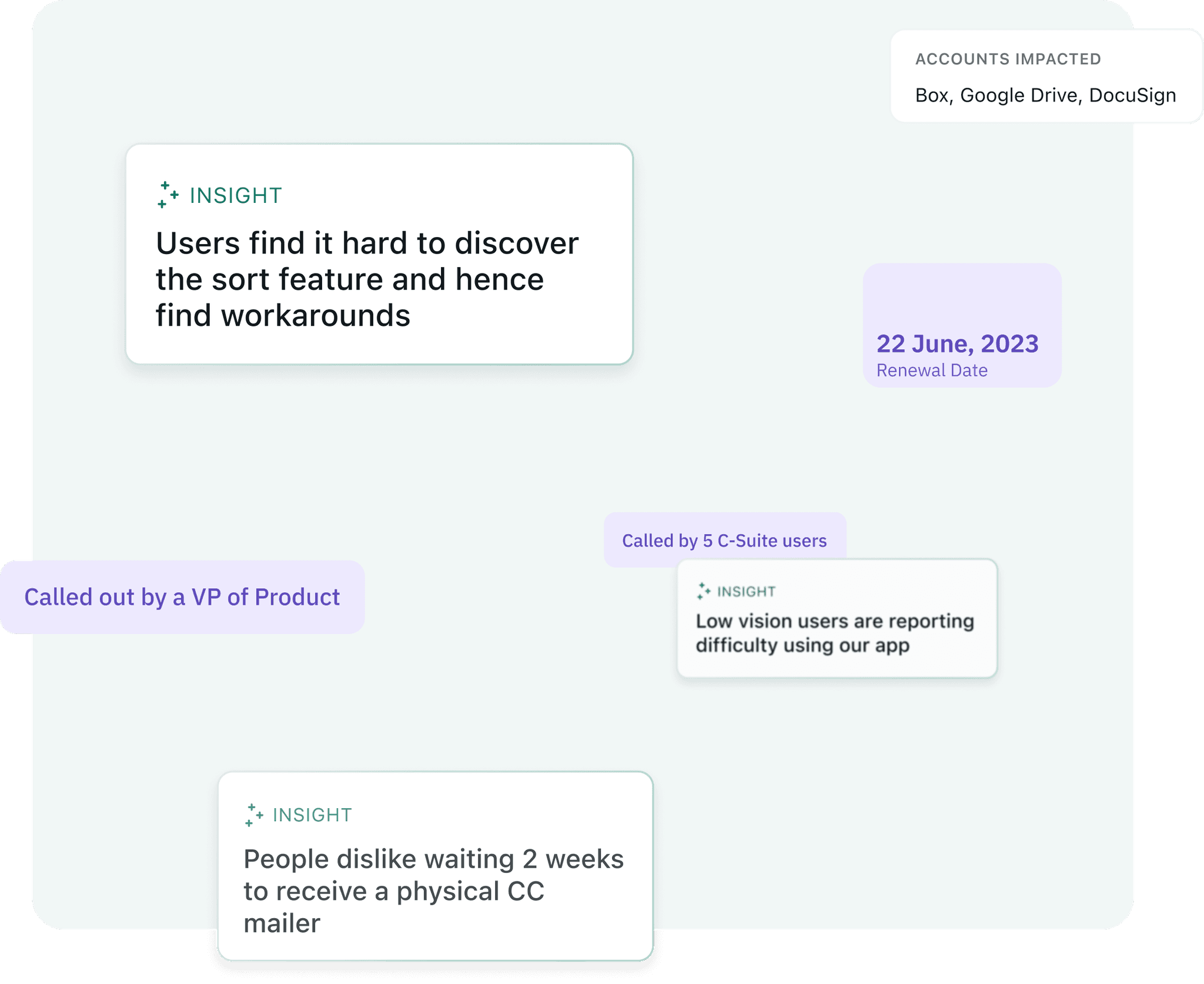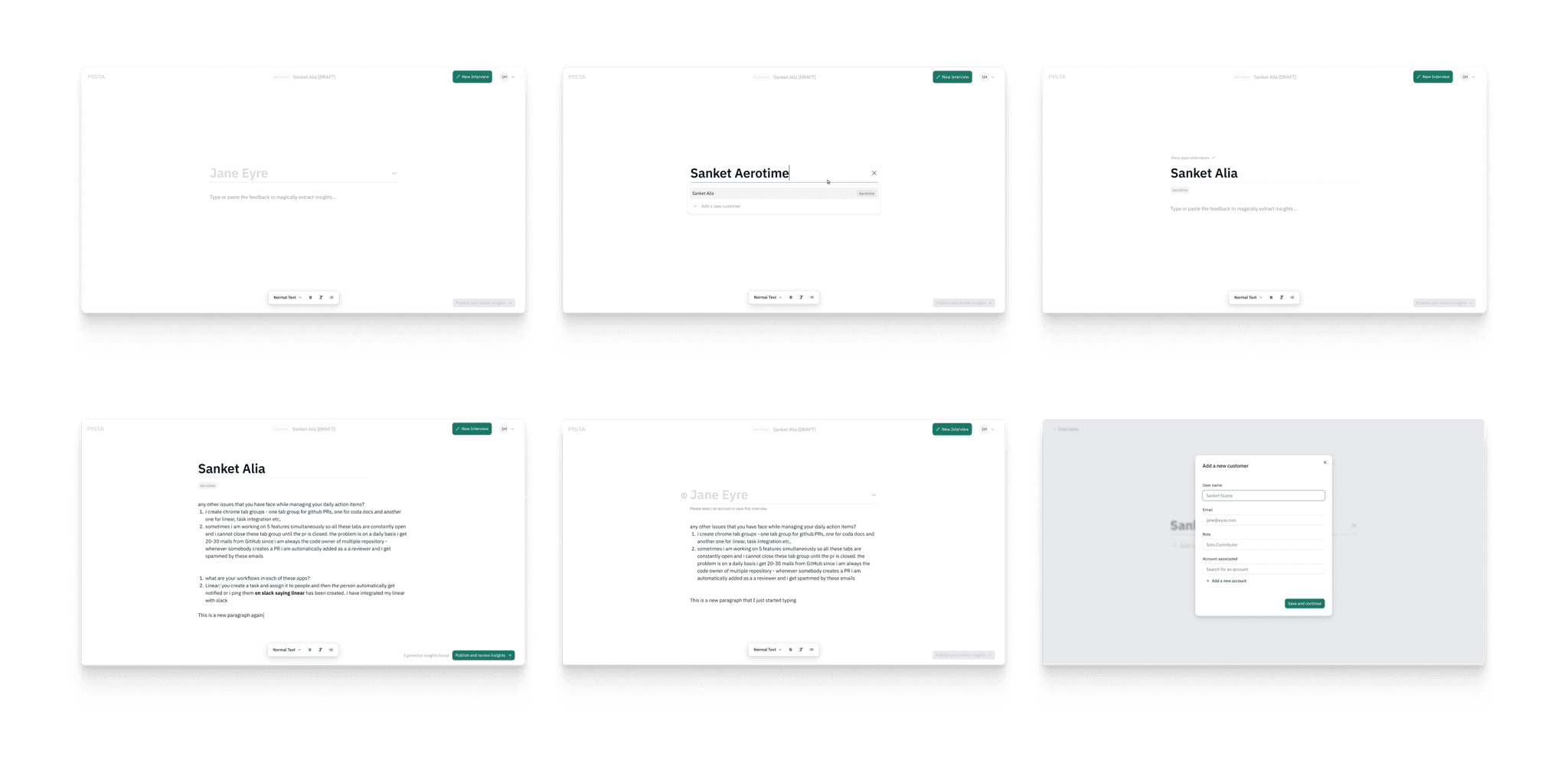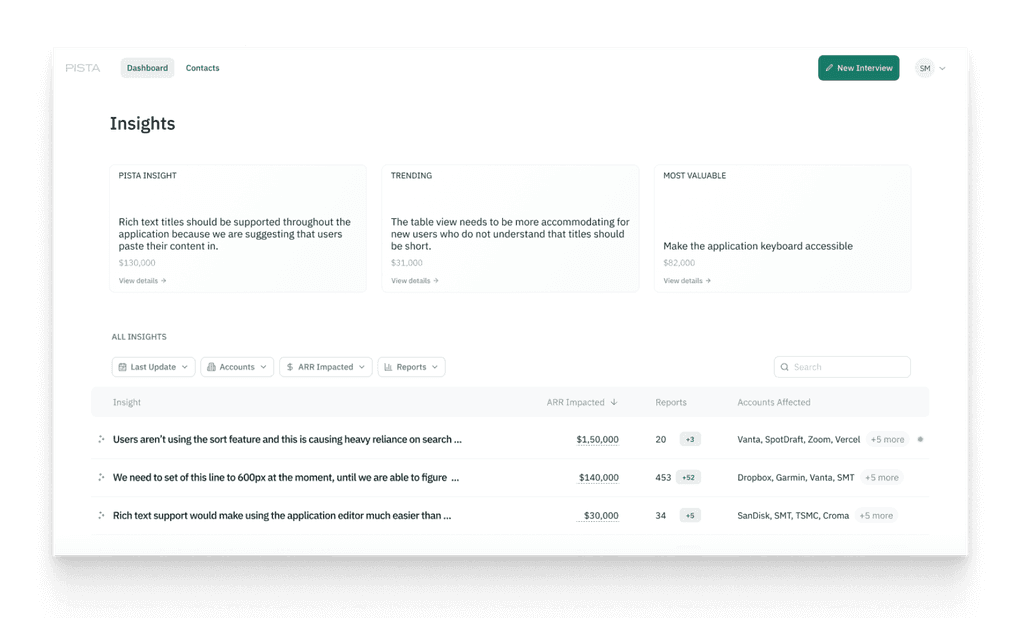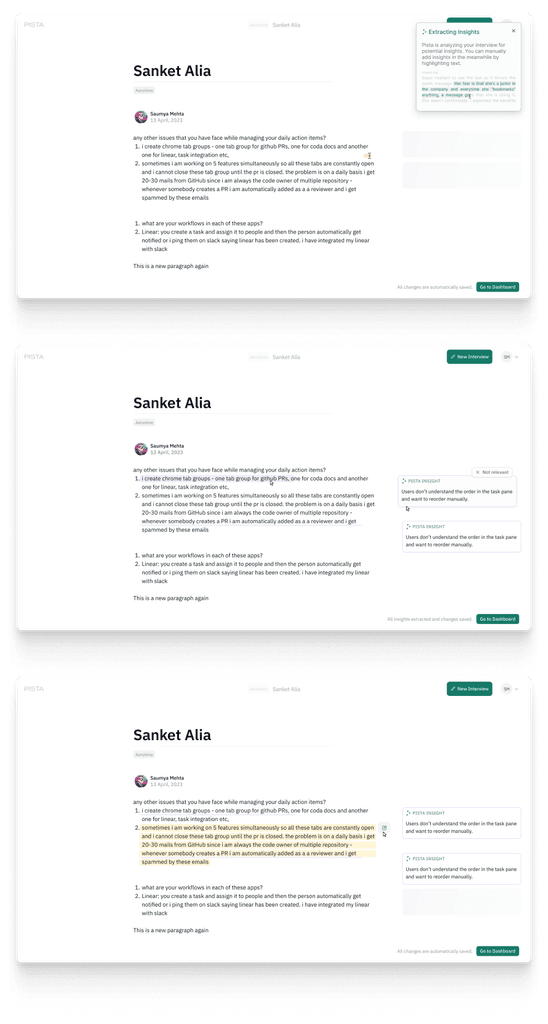Pista
May 2023—July 2023
About
Pista was an early stage product that to help product managers derive insights from the mountains of feedback that their teams receive on a daily basis.
Work
We had the chance to collaborate with Pista in May of 2023, and led product strategy and design efforts on the product from zero to one.
This included the design of an MVP, understanding points of friction in how users would interact with the tooling and conceptualizing and implementing features such as the bucket view, interview capture screens and other interactions in an AI driven product.
Product Development
Most of our time building out Pista was spent on turning insights from pre–sales calls into tangible benefits to existing workflows of enterprise sales teams.
We would talk to users, understand what their issues were with their existing setup and analyze this to understand what needed to be improved.
Insight cards from across Pista.
Interview Capture
One of the first things that we became aware of was that CSM and Product teams already had their own techniques to capture interviews. Often, this was as simple as an Apple Notes window atop the meeting window or it could be as integrated as a customer note in their CRM.
We therefore created a flow to allow these interviews to be added to Pista through both modes—either customers to have us auto–pull data from their Salesforce or Hubspot notes or choose to add interviews directly into Pista, which was popular with smaller teams.
Interactions within the interview add panes.
The interview capture flow that we designed for Pista.
Prioritization
One of the biggest issue for product teams is always deciding what to build next—this is something that we sought to fix with Pista.
The way we solved for this was by attaching the ARR impacted metric to buckets that Pista would automatically curate from the interview data that was provided to it. This allows teams to always objectively evaluate how large an issue is for their users, instead of being swayed by outliers alone.
Pista dashboard seen with custom Insight cards.
Insight Extraction
While creating the flows for insight extraction, it was important that the process of insight generation never feel like a chore or like work.
For this reason, Pista automatically will extract and categorize insights for you to be able to make sense of later. The interactions were streamlined for least friction to the users’ workflows.
Extracting insights from user interviews and automatically categorizing them.
Challenges with Control
Being an AI powered tool, we had to design the interface of Pista while balancing between the possibility of generating garbage insights (because of bad data or error) and involving a human in the process.
We need to create a way for users to easily differentiate between AI and human generated insights, but at the same time ensure that the process of using Pista felt breezy.
While we opted to go with a hands–off approach, we also crafted flows to RLHF insights and improve them when needed. Users were always kept in control of the insights generated from interviews, and at any time could review and decline certain snippets that were misrepresented or mislabelled.
Teaching for a New Generation Tool
Pista, by virtue of creating an entirely new product segment, also came with its share of new interactions. It was imperative that every new interaction feel very natural and not like a speedbump in the user's path.
As a result, we worked tightly with engineering to create interactions that were fully led by our AI models—from interview insight extraction to prioritization, a user would not have to learn new ways to interact with their data unless they sought it out actively.
The end result was a high quality product that users loved using and felt at home in from the first moment they signed into.
Bucket view.








